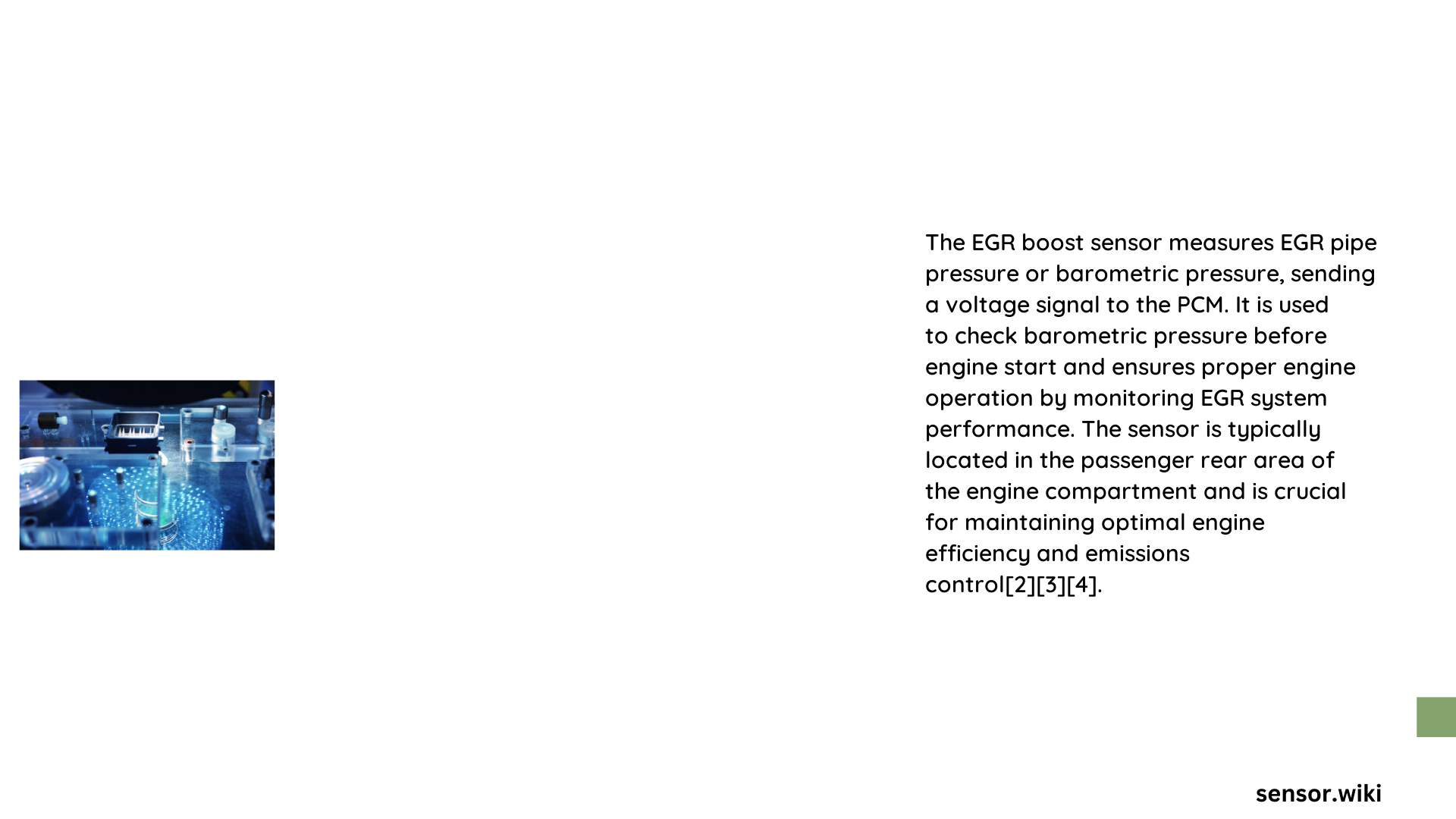The EGR boost sensor represents a sophisticated automotive component that monitors exhaust gas recirculation valve positioning, providing critical feedback to the engine control unit. This precision sensor translates mechanical valve movements into electrical signals, enabling sophisticated engine management strategies that optimize combustion efficiency, reduce nitrogen oxide emissions, and enhance overall vehicle performance across diverse operating conditions.
What Does an EGR Boost Sensor Do?
The EGR boost sensor serves as a critical interface between mechanical valve movement and electronic engine management systems. Its primary functions include:
- Position Monitoring: Tracks exact EGR valve positioning
- Signal Conversion: Transforms mechanical movements into electrical signals
- Performance Optimization: Enables precise exhaust gas recirculation control
How Does the EGR Boost Sensor Operate?
Voltage Measurement Principles
EGR boost sensors typically utilize potentiometer technology to measure valve positioning. The sensor generates voltage signals corresponding to specific valve states:
| Valve State | Typical Voltage Range |
|---|---|
| Fully Closed | 0.7 – 1.0 Volts |
| Partially Open | 1.5 – 2.5 Volts |
| Fully Open | 3.2 – 3.8 Volts |
What Causes EGR Boost Sensor Failures?
Several factors contribute to potential sensor malfunctions:
- Electrical Issues
- Corroded connector pins
- Damaged wiring harness
-
Intermittent electrical connections
-
Mechanical Complications
- Carbon buildup
- Valve mechanism sticking
-
Excessive mechanical wear
-
Environmental Factors
- Extreme temperature variations
- Continuous exposure to exhaust gases
- Vibration and mechanical stress
How to Diagnose EGR Boost Sensor Problems?
Diagnostic Procedure
- Visual Inspection
- Check electrical connections
- Examine sensor and valve for physical damage
-
Verify wiring integrity
-
Electrical Testing
- Use multimeter to measure voltage
- Compare readings with manufacturer specifications
-
Check resistance across sensor terminals
-
Scan Tool Evaluation
- Read diagnostic trouble codes
- Monitor real-time sensor data
- Perform active tests
What Are Replacement Considerations?
Key Replacement Factors
- Vehicle-specific sensor compatibility
- Precise electrical connector matching
- Potential need for ECU recalibration
Cost and Labor Estimates
| Component | Price Range |
|---|---|
| EGR Boost Sensor | $50 – $200 |
| Labor Costs | $75 – $250 |
| Total Replacement | $125 – $450 |
Best Practices for Maintenance
- Regular Inspection: Annually check sensor condition
- Clean EGR System: Remove carbon deposits
- Use Quality Parts: Select OEM or high-grade aftermarket sensors
- Professional Diagnostics: Consult automotive professionals for complex issues
Conclusion

Understanding EGR boost sensor functionality empowers vehicle owners to maintain optimal engine performance, reduce emissions, and prevent potential mechanical complications through proactive maintenance and timely interventions.
